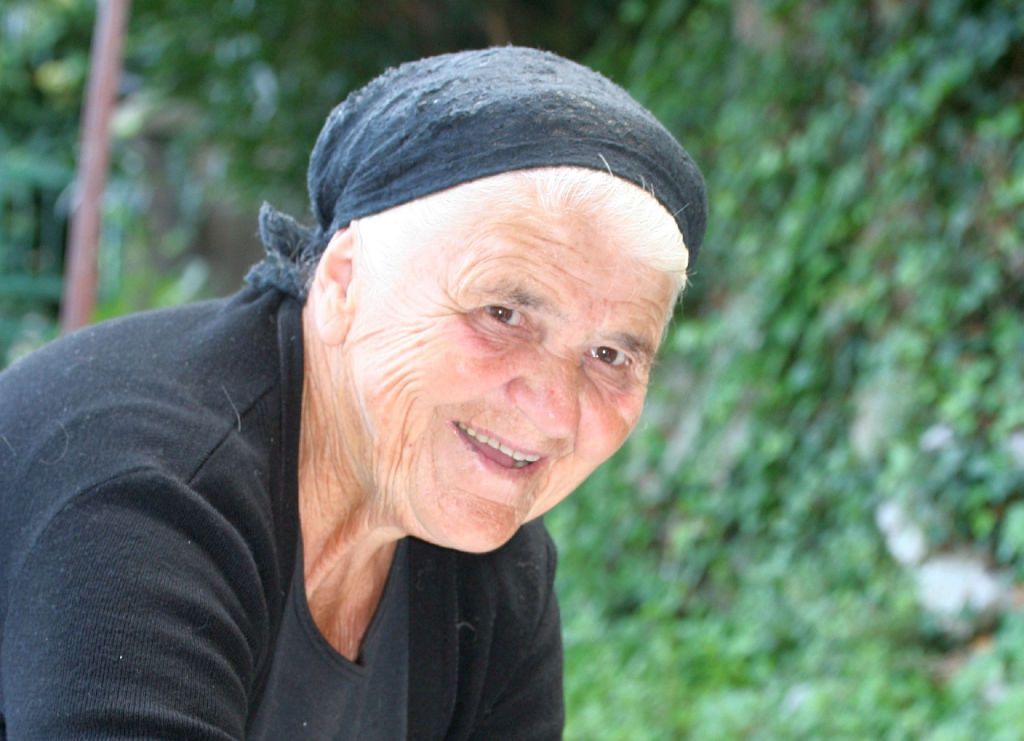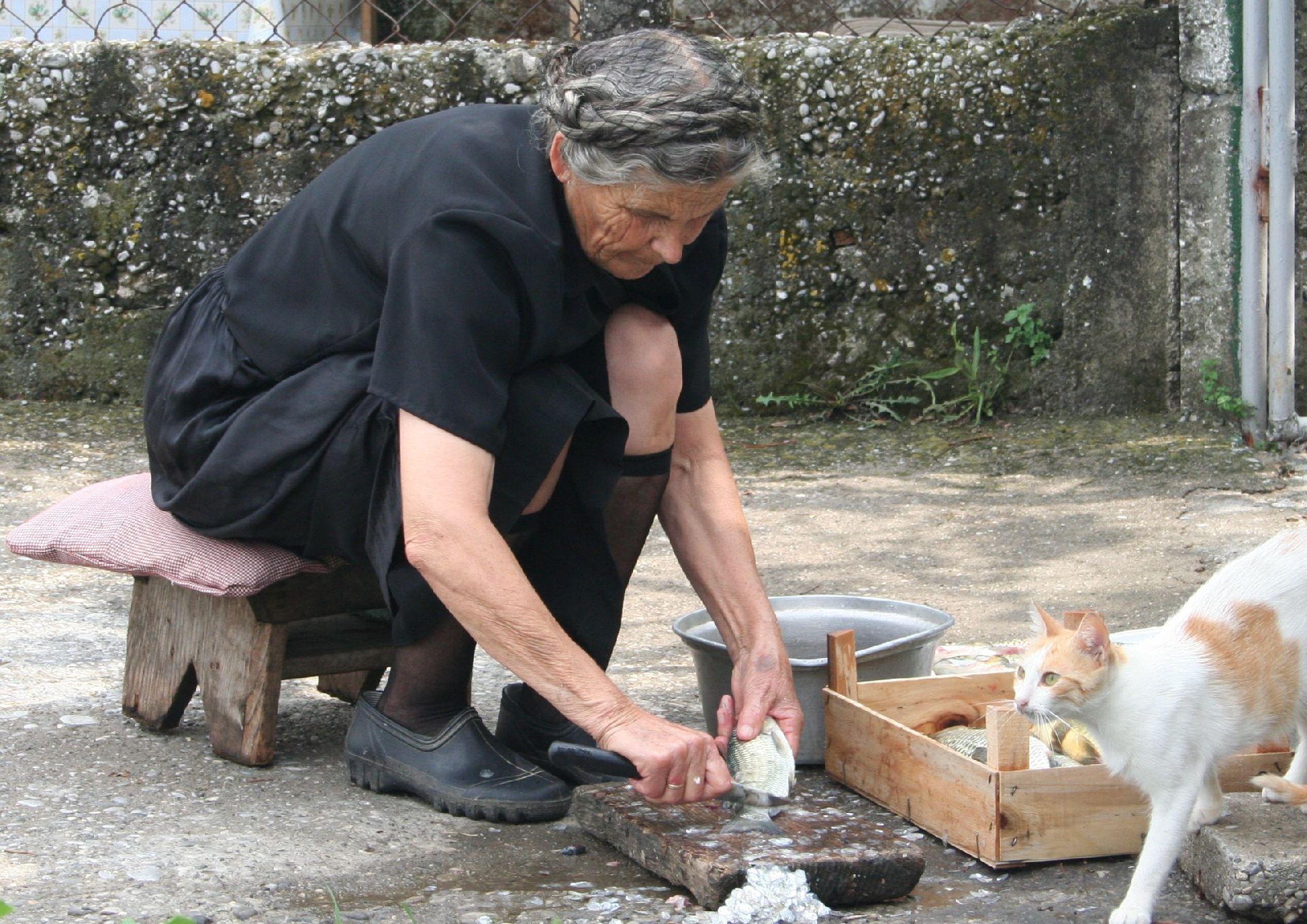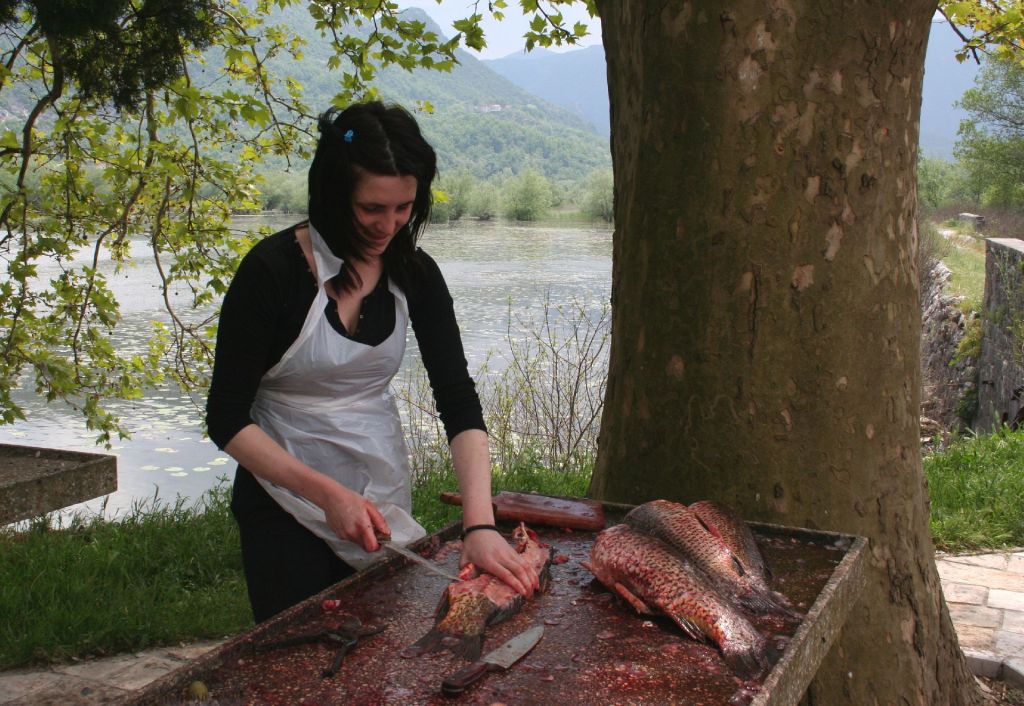I have read quite a lot of books about Montenegro and its history; many of them were written by travel writers visiting Montenegro at the end of the 19th and in the beginning of the 20th century. For me it was fascinating to learn more about life and traditions of the Montenegrin people, but what interested me most was the position of women in those times; apart from all the admiring words the authors wrote about the Montenegrins and their character, the behavior of men towards women was often the subject of heavy criticism and astonishment that got an important place in their travel books. I’ll give you a few examples:
 In 1880, a correspondent of The New York Times wrote: “The Montenegrin woman takes an equal share of labor with the man at field-work, and she does all the carrying. In travel here one engages a horse to ride and a woman for the baggage. Tremendous weights they carry, slung by straps that cross the upper chest and as they go they knit or spin.”
In 1880, a correspondent of The New York Times wrote: “The Montenegrin woman takes an equal share of labor with the man at field-work, and she does all the carrying. In travel here one engages a horse to ride and a woman for the baggage. Tremendous weights they carry, slung by straps that cross the upper chest and as they go they knit or spin.”
One hundred years ago, the Dutch travel writer Henri van der Mandere described the position of women in Montenegro in the following way: “A woman in Montenegro is nothing, she has no rights, she is only suitable to work and carry heavy loads for the man. As a girl, she has to obey her father. As a woman, she has to obey her husband. She is slave and pack animal at the same time; she is not allowed to walk side by side with her husband. In the presence of guests, she will never sit at the table to eat together with the men and if so, nobody will pay attention to her. Montenegrin women are beautiful when they are young; you can see that they belong to a proud race. But this beauty disappears over the years due to child-bearing and a hard life.”
 Zorka Milich, an American anthropologist of Montenegrin origin, wrote the book: “A Stranger’s Supper” (1995), which contains interviews with centenarian women in Montenegro. The interviews confirm many statements of Van der Mandere and other travel writers from those times, but the approach is much less superficial. The book shows, among others, that a woman’s happiness was mostly determined by repeated throws of the genetic dice: if blessed with many sons, she was widely respected and appreciated by her husband’s family and clan. If she had only daughters, her value was much diminished and her life seen as little more fulfilled than that of the pitiful woman with no children at all. But nevertheless, she was always protected and cared for – by her husband, father and brothers.
Zorka Milich, an American anthropologist of Montenegrin origin, wrote the book: “A Stranger’s Supper” (1995), which contains interviews with centenarian women in Montenegro. The interviews confirm many statements of Van der Mandere and other travel writers from those times, but the approach is much less superficial. The book shows, among others, that a woman’s happiness was mostly determined by repeated throws of the genetic dice: if blessed with many sons, she was widely respected and appreciated by her husband’s family and clan. If she had only daughters, her value was much diminished and her life seen as little more fulfilled than that of the pitiful woman with no children at all. But nevertheless, she was always protected and cared for – by her husband, father and brothers.
The position of Montenegrin women rapidly changed after World War II. Women in Montenegro became more independent.
 They got the possibility to study, to get a job and participate in social and political life. However, today’s Montenegro is still a mixture of the traditional and the new. In the generation of middle-aged people is still likely that the woman takes care of the cooking and cleaning up, as well as the education of children – apart from her job. And when you add the fact that they often have to care for their aging parents-in-law (or parents), as there are no old-age homes in Montenegro, you can imagine that their life is not easy at all. It is thus logical that in Montenegro there is still enormous respect today for a “good woman”, one who is virtuous and hardworking, who is a dedicated daughter-in-law and with some luck bears at least one or two sons.
They got the possibility to study, to get a job and participate in social and political life. However, today’s Montenegro is still a mixture of the traditional and the new. In the generation of middle-aged people is still likely that the woman takes care of the cooking and cleaning up, as well as the education of children – apart from her job. And when you add the fact that they often have to care for their aging parents-in-law (or parents), as there are no old-age homes in Montenegro, you can imagine that their life is not easy at all. It is thus logical that in Montenegro there is still enormous respect today for a “good woman”, one who is virtuous and hardworking, who is a dedicated daughter-in-law and with some luck bears at least one or two sons.
Fortunately, the youngest generations of women, let’s say up to thirty years of age, have reached full gender equality, at least in the urban environment. Young women enjoy their freedom, they are independent and ambitious in their work or study, they like to go out and dress well… But there is one thing that will never change: the extraordinary role that family plays in a woman’s life. And as a matter of fact: Montenegro is nothing but a large family.


[…] I have not mentioned Montenegrin women and family life, this will be the topic of another blog […]
[…] 10. THE MONTENEGRIN CHARACTER: Montenegrins are proud and self-confident, hospitable and generous. But many of them are also lazy… They enjoy doing nothing, sitting in a pub with their friends and discussing all possible world issues. They just don’t have the “internal need” to work. Don’t blame them! Try to understand that family and friends remain the center of Montenegrin culture and the pinnacle of importance on the people’s mind, despite the changes in the last decades (see my blog posts: People of Montenegro and Women of Montenegro). […]
I am very sorry, but may be you don’t know that that is the situation among a lot of woman in the Islam. not only in Montenegro.
Ilana, that is, sadly, so true!